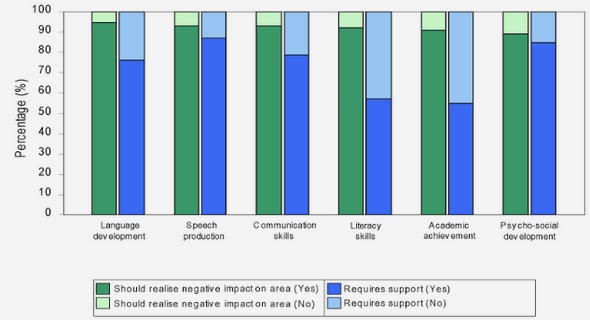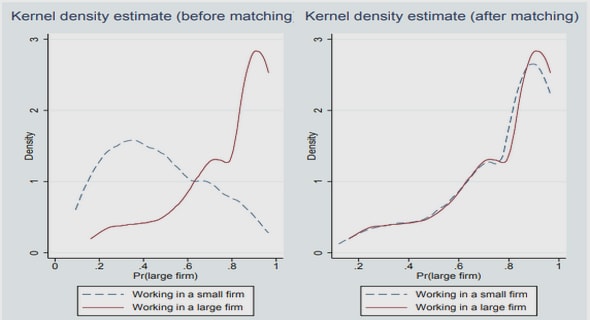Get Complete Project Material File(s) Now! »
Vertical structure of temperature and other variables in the ABL
It remains important to study the variables in the troposphere since their vertical structure and interaction among themselves control both ABL diurnal cycle and growth rate. Vertical mean profiles of some classical meteorological variables within the ABL are illustrated in Figure 1-5 when no external forcing due to advection or large-scale circulations are considered. During daytime (Figure 1-5a) temperature decreases with altitude, with a similar gradient as the one for the potential temperature within the surface layer and in the entrainment zone (i.e. the capping inversion zone during daytime) where an inversion of temperature is spotted (thus some methods for determining ABL are based on this criteria). Specific humidity also tends to decrease with altitude in the ABL until it remains constant in the free atmosphere. As expected, wind velocity profile increases with height until reaching the geostrophic wind speed.
At night (Figure 1-5b), a temperature inversion near surface is generally observed within the so-called surface boundary layer, and above temperature decreases with height. Potential temperature and specific humidity both have very low values near the surface and increase on average all along the boundary layer with a stronger gradient in the residual layer. The wind vertical profile increases with height but with a lower gradient than during daytime due to the low turbulence that makes less effective the mixing of heat downward.
GENERAL DESCRIPTION OF THE SURFACE ENERGY BALANCE (SEB)
As previously stated, some fluxes are developed in the bottom part of the ABL, with temporal scale of associated processes ranges from some seconds up to several hours during the day. All the small-scale processes at the surface are related to solar radiation and advection of air.
The Surface Energy Balance (SEB) describes the portioning of energy fluxes arriving and leaving the surface, over a specifically interval of time. It represents the exchange of energy between the Earth’s surface and the immediately overlaying atmosphere. These surface-atmosphere interactions within the ABL are essential elements of the climate system. For a given large-scale circulation condition, SEB controls the temperature at the surface and its diurnal cycle (Hartmann, 1994), depending on the amount of energy fluxes available. The advection of air that depends on both this large-scale circulation and local environment, will play a more or less important role depending on the time scale considered. The amount of incoming solar radiation (the main source of energy to the Earth) varies as a function of Earth’s rotation and the zone of study, therefore the SEB at the tropics (where deep convective zones can develop) presents completely different values than those at mid or high latitudes.
Over land, within the ABL, the fluxes are the radiation, the turbulent heat, and the ground heat. These fluxes and their intensity vary depending on the type of the vegetation, the type of the soil, cloud cover, and the presence of some aerosols such as dust. Figure 1-7 shows the different sources (i.e. fluxes) of contribution (over land) to the SEB, when an infinitesimally thin one-dimensional surface with no heat capacity is considered: – The radiative fluxes (FR) that include the shortwave (SW, spectral interval: 0.4 𝜇m to 4 𝜇m) solar radiation received at the surface and reflected by it (yellow arrows) and the longwave (LW, spectral interval: 4 𝜇m to 30 𝜇m) radiation emitted from the surface and received from the atmosphere emission (red arrows). – The turbulent fluxes (FA) defined as the sum of the sensible Fsens and latent Flat heat fluxes (green arrows). – The ground flux (FG) which is the heat flux into the ground measured from a certain depth to the top of the soil. Because we are considering an horizontal homogeneity, the advection of air (blue horizontal arrows in Figure 1-7) does not make part of the surface energy balance but it has to be considered to determine the surface temperature variation (cf. Section 2.2.1.2.), hence it is added to the representation of Figure 1-7.
Diurnal and annual cycle of the SEB terms
All the aforementioned terms are the main source of energy within the ABL. Their estimation methods vary depending on the zone, and the availability of observations as previously stated. Nevertheless, when observations are available, they can be estimated using direct measurement of each of these fluxes, as done for example by Mauder et al. (2007) in Nigeria, and shown in Figure 1-10. This figure presents the diurnal values of each SEB term for three different days having different soil conditions (details are given in the figure caption). A negative daily cycle is found for the flux radiation for the three days (in their study, they consider the net flux radiation to be negative in the SEB equation) where cloudy conditions predominate, with some fluctuations on 03/03/2004 due to variations on cloud cover along the day. High soil moisture conditions (middle and right figures) enhances higher latent heat fluxes values than when the soil is dry and then sensible heat flux is higher (left figure), and then ground heat flux becomes the same order of magnitude than the sensible heat flux.
The residual in Figure 1-10 is due to the fact that the sum of Fsens, Flat and FG is not exactly equal to FR (cf. Eq. 1.1), is the highest for 03/03/2004 when cloudiness varied during day hours. Indeed, this residual is known as the non-closure of the surface energy balance and is defined as the failure of the sum of the turbulent heat and ground fluxes to account for the available energy provided by the radiative fluxes. This non-closure may be due to a failure of the instrument’s measurements, the time-scale considered and the methods used to estimate each of these fluxes (e.g. Russell et al., 2015; Leuning et al., 2012; Oncley et al., 2007) or even the wrong estimation of the air advection (Gao et al., 2017). Nowadays understanding the causes of this non-closure and how measures and parametrization can be improved remain a very important topic on the research community.
General impact on SEB and 2 m temperature
The radiative fluxes on the SW and LW domain arriving at the surface are conditioned by the presence of clouds, and because these radiative fluxes are the main incoming source of energy of SEB, turbulence in lower layers of the ABL is also indirectly affected by clouds. In mid-latitudes zones, the role of clouds on the SEB, precipitations and other surface parameters such as soil moisture has been studied in order to better understand their relationship with these variables and to improve the different regional climate models (Cheruy et al., 2014; Boé, 2013; Santanello et al., 2011). Moreover, the scientific community has addressed a special focus on the polar regions and the influence of clouds on the SEB due to the global warming and their relationship to the melting events of the last decades (e.g. Sedlar et al., 2010; Broeke et al., 2006; Bennartz et al., 2013; Miller et al., 2017; Van Tricht et al., 2016). These zones have indeed become a point of interest for studying the Earth’s responses to a changing climate.
As for the effect of clouds on temperature, they could be involved in some extreme hot and cold events. For instance, the absence of low-level clouds in Europe was in part responsible of the extreme heat wave experienced on July 2006, by amplifying the daily surface temperature, as shown by Chiriaco et al. (2014). This absence of clouds was coupled with very dry soils that constraint the development of convective clouds and hence no precipitations occurred. Furthermore, McCaffrey et al. (2019) showed that cold pool events can last for several days in winter when a persisting cloud cover is set, which decreases the ABL growth rate and thus facilitating stable conditions to set when cold air is trapped near the surface. On the contrary, Betts et al. (2016) illustrated that the warmest temperatures during winter in Canada were found during cloudy conditions, when the LW warming by clouds dominates temperatures. An opposite effect is found for summer season when the coolest surface temperatures are found under cloudy skies due to a strong SW reflection back to space by clouds.
Table of contents :
Table of Contents
Introduction 14
1 Chapter 1: Description of the different components that influence the local temperature
Introduction
1.1 European climate: regional-scale processes
1.2 Smaller local scale characteristics involving temperature variations
1.2.1 The Atmospheric Boundary Layer
1.2.2 Vertical structure of temperature and other variables in the ABL
1.2.3 Air advection
1.3 General description of the surface energy balance (SEB)
1.3.1 Radiative fluxes
1.3.2 Turbulent heat fluxes
1.3.3 Ground heat flux
1.3.4 Diurnal and annual cycle of the SEB terms
1.4 Clouds processes affecting SEB
1.4.1 Types of clouds and their composition
1.4.2 Radiative properties
1.4.3 General impact on SEB and 2 m temperature
Conclusion
2 Chapter 2: Data and Methods
Introduction
2.1 Data
2.1.1 The SIRTA observations
2.1.2 The Météopole observations
2.1.3 ERA5 and ERA5-Land Reanalysis
2.2 Methods
2.2.1 Observation-based temperature evolution model
2.2.2 The random forest method
Conclusion
3 Chapter 3: Influence and contribution of each OTEM term on local 2 m temperature variations
Introduction
3.1 Evaluation of the model
3.1.1 Statistical evaluation of OTEM
3.1.2 Hourly evolution of OTEM capability
3.1.3 Focus on specific cases that OTEM does not capture
3.2 Evolution of the different OTEM terms
3.2.1 Annual contribution of each term
3.2.2 Monthly-hourly contribution of each term
3.2.3 Advection dependence on wind direction
3.3 Importance estimation of each term: the random forest application
3.3.1 General estimation
3.3.2 Diurnal cycle of the weight estimates
3.3.3 Validation of the random forest method
3.3.4 Basic settings on random forest method to study the weight of each term
Conclusion
4 Chapter 4: Specific influence of clouds on 2 m temperature variations under cloudy conditions
Introduction
4.1 Contribution of OTEM terms in cloudy conditions
4.2 Creation of clouds categories
4.2.1 Cloud categories based on their radiative effect
4.2.2 Specific lidar sampling for daytime cases
4.3 Daytime vertical low-atmosphere structure and characterization under different cloud effects
4.3.1 Seasonal cycle of cloud occurrence
4.3.2 Clouds with strong cooling effect
4.3.3 Clouds with weak radiative effect: cooling or warming
4.4 Nighttime low-atmosphere characterization under positive cloud effects
4.4.1 Clouds with weak warming effect
4.4.2 Clouds with strong warming effect
Conclusion
5 Chapter 5: Meteorological and geographical variability of the OTEM terms
Introduction
5.1 Dependence of the contribution of OTEM terms to weather regimes
5.1.1 Mean contribution of OTEM terms to weather regimes
5.1.2 Weight of OTEM terms for the weather regimes
5.2 Spatial variability of OTEM terms: comparison between Toulouse and SIRTA
5.2.1 Statistics of OTEM in the Météopole
5.2.2 Comparison between SIRTA and the Météopole
Conclusion
Conclusions and perspectives
References


